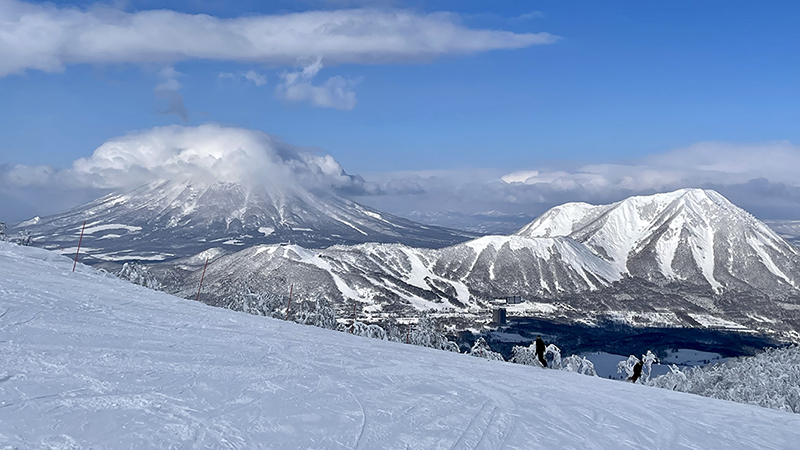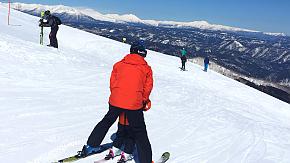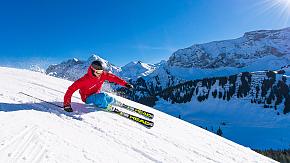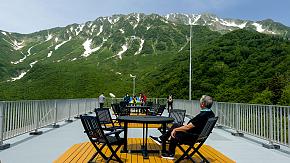Best Time to Ski in Japan
Home to an astonishing 600 ski resorts of all sizes, with soothing hot springs, powdery snow, and excellent cross-country tracks, a winter Japan tour still retains its charm. With so many ski resorts to choose from, when is the best time to begin the skiing adventure in Japan? From the period with the best snow quality to a relaxing time with fewer crowds and more affordable prices, read this full guide to find your best time to ski in Japan.

Japan's Ski Season - December to Early April
The ski season in Japan typically runs from December to early April, when the mountains and slopes are blanketed with thick fresh snow. Hokkaido, in the northernmost region, often kicks off the season earlier in late November, as does the Nagano area due to its higher altitude.
Even so, with so many ski resorts nationwide, actual opening and closing times vary according to snow conditions, location, and policy of each ski resort in a different area. For example, Snowtown Yeti, on the southern slope of Mount Fuji, may start in late October, and some may last until staggering May.
 Enjoy the Snow of Japan
Enjoy the Snow of Japan
Key Takeaways of the Best Time to Ski in Japan
• January is usually the month with the best snow conditions.
• January and February bring the heaviest snowfall in Japan.
• For superb powder and fresh tracks, the peak season from January to February is a great time to visit.
• For extraordinary winter festivals in Japanese style, visit during the Christmas and New Year holidays or in early February for the snow festivals.
• For smaller crowds and a budget, the early pre-Christmas season and Late February to April are ideal times to experience.
Overall, the best time to ski in Japan depends on your priorities. Notably, the actual operating periods are dependent on local weather conditions, with updated information accessible on the ski resort website as needed.
Early Season
Dates: Late November to Mid-December
Best for: Beginner, quieter atmosphere & discounted fees
The early season is the pre-Christmas period from late November to mid-December, the first ski season to catch fresh powder in Hokkaido and Nagano, with fewer skiers and a quieter atmosphere to enjoy the crowd-free snow trails.
The shallow snow depth makes it an ideal time for beginners to try skiing for the first time. Many resorts offer on-piste trails and guides suitable for both beginners and intermediates, even on pre-Christmas weekends. Additionally, hotel rooms, lift tickets, and season passes are typically more affordable during this period, allowing you to enjoy discounts at various ski resorts.
Ski resorts in Hokkaido and Nagano are great options if you're looking for empty slopes and fresh powder. Also, if you don't mind artificial snow, there are also several early-opening ski resorts in central Japan, such as Snowtown Yeti around Mt. Fuji, which opens surprisingly early in October; Sayama Ski Resort offers a unique indoor skiing experience for every ski enthusiast.
The pre-Christmas ski season is an ideal time for a fresh experience. You can enjoy smaller crowds, discounted fees, and fresh powder. However, accommodations, restaurants, and transport may be limited during this shoulder ski season, so don't forget to book your journey as early as possible.
Christmas & New Year's Day
Dates: Late December to Early January
Best for: Festive atmosphere, family tour
Christmas Day to New Year's Day is considered the first stage of the peak ski season in Japan, which is reputedly the most popular period for both Japanese and international holidaymakers.
Snow begins to fall in large quantities from late December to early January. A ski trip during this time allows you to enjoy local seafood, Christmas Eve fireworks, New Year's torch lighting, and festive dinners, making for an unforgettable holiday experience.
You can enjoy the excellent silky powder and well-groomed on-piste trails at major resorts like Niseko, Rusutsu, Tomamu, and Hakuba, but be prepared for heavy congestion from all over the world. Many of these resorts are extremely crowded, and prices for hotels, ski passes, and flights can rise steeply during this festival season.
If you're only available during the Christmas and New Year holidays, there are some recommended ski resorts to visit for a relaxing experience. Karuizawa Resort and Echigo-Yuzawa Resort are easily accessible and tend to be less crowded, offering more tranquil sightseeing and easier access to Snow Monkey Park. Be sure to book as early as possible.
Peak Season
Dates: Early January to Mid-February
Best for: Best powder snow conditions, snow festivals
From early January to mid-February, Niseko, Hakuba, and Nozawa Onsen, most of Japan's ski resorts, are blessed with high-quality, consistent powder at its most vibrant. Its light, fluffy texture has mass appeal for ski enthusiasts, making this the peak season for skiing in Japan.
It is a great time to dive into the deep, soft snow for all kinds of snow activities. Experienced skiers can take advantage of the variety of well-groomed terrain and long, fresh slopes to enjoy the thrill of tree skiing or night skiing, while beginners can take ski or snowboard lessons or just have a brave go on the soft snow.
 Skiing in Japan
Skiing in Japan
There's also a wide range of accommodations to choose from, including well-appointed hotels, traditional Japanese ryokan, private inns, and more, catering for both luxury and standard tastes. The surrounding restaurants, shops, and leisure facilities are also fully available for your enjoyment.
The peak season is also accompanied by lots of winter events, ranging from the Hakuba Valley Ski Jumping Competition to the various snow festivals. Sapporo Snow Festival, is one of the most spectacular events bustling with incredible ice sculptures, snow slides, and food stalls. If you want to experience Japan's stunningly festive atmosphere in winter, these two months are an excellent time to visit.
It is noteworthy that there will be congestion during the peak season and the prices of ski passes and lodging are higher. To make the most of your winter experience, it is essential to book well in advance.
Mid Season
Dates: Late February to Early March
Best for: Warmer temperatures, abundant snowfall, comfortable prices
Late February to early March marks the end of the peak ski season, with abundant snowfall still making it a great time to hit the slopes. The warmer temperatures are ideal for outdoor activities like snowshoeing around the Japan Alps.
However, powder snow may not be as consistent for skiing, making this period better suited for those seeking fewer crowds and a more relaxed experience. Especially the resorts in Niseko and Hakuba, usually at a better rate to enjoy their excellent slopes with great snow conditions.
And if the powder snow is too deep to work on your skiing technique, take advantage of the mid-season to improve your skiing skills, which is very popular with beginners and intermediate skiers.
Late Season
Dates: Mid-March to Early April
Best for: Clear weather, discounted fees, final powder snow, cherry blossom
March and April mark the end of Japan's ski season, as temperatures in March rise in most lower-elevation resorts, snowfall decreases, and the powder becomes less ideal. However, higher-elevation resorts like those in Hakuba can still experience impressive spring powder dumps, making the final spring ski season a fun and enjoyable experience.
The decreasing number of snowy days brings some of the ski resorts more fine and clear weather, which offers wonderful views against the azure sky. You can enjoy backcountry ski tours characterized by fresh powder and almost uncrowded slopes.
Tenjindaira is an ideal option for backcountry skiing and riding. Kiroro, for example, has the stability of quality powder at both the start and end of the season. Ski resorts in the Honshu region, such as Hakuba Valley, are the most recommended, as March and April are also the cherry blossom season in Tokyo and Kyoto, which is easily accessible after skiing.
What's more, starting in mid-March, discounted lift passes and lodging are available. In brief, March and April are the best months to visit if you're looking for a great deal, with very few crowds, nice weather, and a glimpse of the cherry blossoms. However, in the closing stages of the ski season, there are maybe fewer choices of ski resorts and surrounding shops, restaurants, and other facilities.
Ski Tips
• Despite the temperature creeping up in spring, Japan during this time can still be very cold, so be ready for some warm and water-resistant clothes and ski equipment.
• No matter what time of the ski season you choose to ski in Japan, it is essential to reserve your lift tickets and lodging much in advance, especially if you intend to experience the busy season.
• Most resorts in peak season are packed with large crowds. To avoid crowds as much as possible, you can choose to ski at smaller resorts and do skiing on weekdays and during non-school breaks.
Enjoy the Best Time to Ski in Japan
Japan has so many skier-friendly ski resorts in different areas that it is quite challenging to decide the best time to ski in the country. In any event, it is necessary to arrange your itinerary. If you have a hard decision to make, Odynovo will help you organize your itinerary. Aiming to meet your needs, we ensure an unparalleled ski experience for you.
Quick Question
What Our Clients Say
Explore the latest verified reviews of Odynovo's travel services on Tripadvisor, Google, Trustpilot, Product Review and more trusted platforms.
SUBSCRIBE TO WIN A FREE TOUR
Subscribe to our newsletter for a chance to win a free 7-day tour to India! And more insider travel news, exclusive offers, and inspiration will be sent straight to your inbox. Check our previous newsletters and get some sparks.






